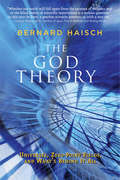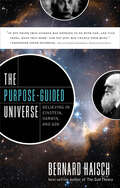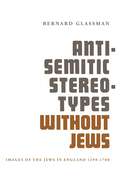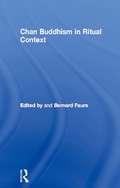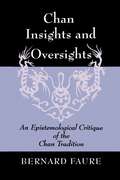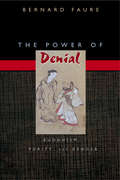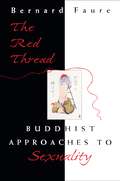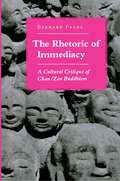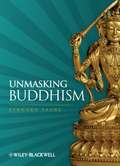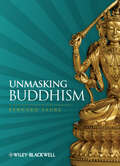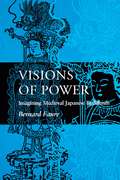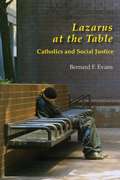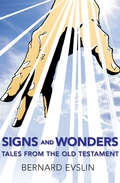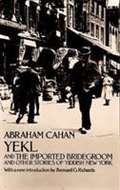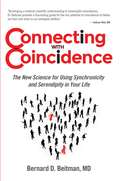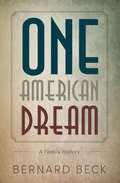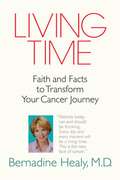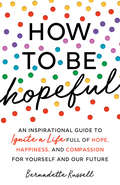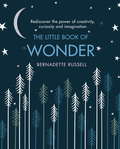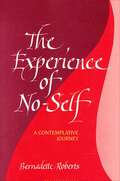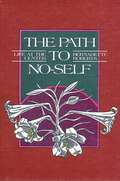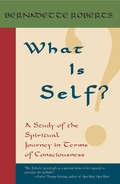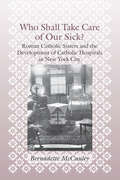- Table View
- List View
The God Theory: Universes, Zero-Point Fields, and What's Behind It All
by Bernard HaischOn the one hand, we have traditional science, based on the premises of materialism, reductionism, and randomness, with a belief that reality consists solely of matter and energy, that everything can be measured in the laboratory or observed by a telescope. If it can't, it doesn't exist. On the other hand, we have traditional religious dogma concerning God that fails to take into account evolution, a 4.6 billion-year-old Earth, and the conflicting claims of the world's religions. In The God Theory, Bernard Haisch discards both these worldviews and proposes a theory that provides purpose for our lives while at the same time is completely consistent with everything we have discovered about the universe and life on Earth. To wit, Newton was right -- there is a God -- and wrong -- this is not merely a material world. Haisch proposes that science will explain God and God will explain science. Consciousness is not a mere epiphenomenon of the brain; it is our connection to God, the source of all consciousness. Ultimately it is consciousness that creates matter and not vice versa. New discoveries in physics point to a background sea of quantum light underlying the universe. The God Theory offers a worldview that incorporates cutting-edge science and ancient mystical knowledge. This is nothing less than a revolution in our understanding.
The Purpose-Guided Universe: Believing in Einstein, Darwin, and God
by Bernard Haisch“If you think that science has nothing to do with God, and vice versa, read this book—and you just may change your mind.” —Professor Peter Sturrock, Dept. Physics, Stanford UniversityIn this engrossing new book, Dr. Bernard Haisch contends that there is a purpose and an underlying intelligence behind the Universe, one that is consistent with modern science, especially the Big Bang and evolution. It is based on recent discoveries that there are numerous coincidences and fine-tunings of the laws of nature that seem extraordinarily unlikely.A more rational concept of God is called for. As astrophysicist Sir James Jeans wrote, “the Universe begins to look more like a great thought than like a great machine.”Despite bestsellers by Christopher Hitchens, Richard Dawkins, and Sam Harris that have denounced the evils of religion and proclaimed that science has shown that there is no God, The Purpose-Guided Universe shows how one can believe in God and science.“Committed atheists, traditional Christians, or hard-core Muslims will no doubt try to dismiss this book . . . provocative.” —Prof. Owen Gingerich, Harvard-Smithsonian Center for Astrophysics, author, God’s Universe“Neither science nor theology can consider itself informed without taking into account Haisch’s views.” —Larry Dossey, MD, author, Healing Words“Merits being read and pondered by everyone seeks deeper meaning underlying science’s ever more astounding view of the world.” —Dr. Ervin Laszlo, author, Science and the Akashic Field“An enlightening exploration.” —Julia Ann Charpentier, ForeWord Reviews
Anti-Semitic Stereotypes without Jews: Images of the Jews in England 1290-1700
by Bernard GlassmanAnti-Semitic Stereotypes Without Jews offers an exploration of English history, 1290- 1700, tracing the growth and development of these attitudes. It demonstrates that it is possible for prejudice to thrive even in the absence of a scapegoat group. Following the expulsion in the year 1290 until 1656, although there was no real Jewish community in England, the molders of public opinion kept a shadowy image of the Jew alive through sermons and religious tracts, travelogues, folklore, religious and secular drama. In his analysis, Dr. Glassman shows that despite their theological differences, Anglican, Puritan, and Catholic clergymen concurred in the negative images of Jews presented to their congregations. They pictured the Jews as Christ-killers, and related myths of how Jews performed barbaric and sacrilegious rituals. The image was to plague Anglo-Jewry after a small community was reestablished in the second half of the 17th century. The author's belief that anti-Semitism is primarily a Christian problem transcends both time and place is covered by this volume. Anti-Semitic sentiments are seen here as reflecting deep-seated, irrational responses to the Jewish people, rooted in the teachings of the church and exploited by men who needed an outlet for religious, social, and economic frustrations.
Chan Buddhism in Ritual Context (Routledgecurzon Studies In Asian Religion)
by Bernard FaureThe essays in this volume attempt to place the Chan and Zen tradition in their ritual and cultural contexts, looking at various aspects heretofore largely (and unduly) ignored. In particular, they show the extent to which these traditions, despite their claim to uniqueness, were indebted to larger trends in East Asian Buddhism, such as the cults of icons, relics and the monastic robe.The book emphasises the importance of ritual for a proper understanding of this allegedly anti-ritualistic form of Buddhism. In doing so, it deconstructs the Chan/Zen 'rhetoric of immediacy' and its ideological underpinnings.
Chan Insights and Oversights: An Epistemological Critique of the Chan Tradition
by Bernard FaureFor many people attracted to Eastern religions (particularly Zen Buddhism), Asia seems the source of all wisdom. As Bernard Faure examines the study of Chan/Zen from the standpoint of postmodern human sciences and literary criticism, he challenges this inversion of traditional "Orientalist" discourse: whether the Other is caricatured or idealized, ethnocentric premises marginalize important parts of Chan thought. Questioning the assumptions of "Easterners" as well, including those of the charismatic D. T. Suzuki, Faure demonstrates how both West and East have come to overlook significant components of a complex and elusive tradition. Throughout the book Faure reveals surprising hidden agendas in the modern enterprise of Chan studies and in Chan itself. After describing how Jesuit missionaries brought Chan to the West, he shows how the prejudices they engendered were influenced by the sectarian constraints of Sino-Japanese discourse. He then assesses structural, hermeneutical, and performative ways of looking at Chan, analyzes the relationship of Chan and local religion, and discusses Chan concepts of temporality, language, writing, and the self. Read alone or with its companion volume, The Rhetoric of Immediacy, this work offers a critical introduction not only to Chinese and Japanese Buddhism but also to "theory" in the human sciences.
The Power of Denial: Buddhism, Purity, and Gender (Buddhisms: A Princeton University Press Series #4)
by Bernard FaureInnumerable studies have appeared in recent decades about practically every aspect of women's lives in Western societies. The few such works on Buddhism have been quite limited in scope. In The Power of Denial, Bernard Faure takes an important step toward redressing this situation by boldly asking: does Buddhism offer women liberation or limitation? Continuing the innovative exploration of sexuality in Buddhism he began in The Red Thread, here he moves from his earlier focus on male monastic sexuality to Buddhist conceptions of women and constructions of gender. Faure argues that Buddhism is neither as sexist nor as egalitarian as is usually thought. Above all, he asserts, the study of Buddhism through the gender lens leads us to question what we uncritically call Buddhism, in the singular. Faure challenges the conventional view that the history of women in Buddhism is a linear narrative of progress from oppression to liberation. Examining Buddhist discourse on gender in traditions such as that of Japan, he shows that patriarchy--indeed, misogyny--has long been central to Buddhism. But women were not always silent, passive victims. Faure points to the central role not only of nuns and mothers (and wives) of monks but of female mediums and courtesans, whose colorful relations with Buddhist monks he considers in particular. Ultimately, Faure concludes that while Buddhism is, in practice, relentlessly misogynist, as far as misogynist discourses go it is one of the most flexible and open to contradiction. And, he suggests, unyielding in-depth examination can help revitalize Buddhism's deeper, more ancient egalitarianism and thus subvert its existing gender hierarchy. This groundbreaking book offers a fresh, comprehensive understanding of what Buddhism has to say about gender, and of what this really says about Buddhism, singular or plural.
The Red Thread: Buddhist Approaches to Sexuality (Buddhisms: A Princeton University Press Series #1)
by Bernard FaureIs there a Buddhist discourse on sex? In this innovative study, Bernard Faure reveals Buddhism's paradoxical attitudes toward sexuality. His remarkably broad range covers the entire geography of this religion, and its long evolution from the time of its founder, Xvkyamuni, to the premodern age. The author's anthropological approach uncovers the inherent discrepancies between the normative teachings of Buddhism and what its followers practice. Framing his discussion on some of the most prominent Western thinkers of sexuality--Georges Bataille and Michel Foucault--Faure draws from different reservoirs of writings, such as the orthodox and heterodox "doctrines" of Buddhism, and its monastic codes. Virtually untapped mythological as well as legal sources are also used. The dialectics inherent in Mahvyvna Buddhism, in particular in the Tantric and Chan/Zen traditions, seemed to allow for greater laxity and even encouraged breaking of taboos. Faure also offers a history of Buddhist monastic life, which has been buffeted by anticlerical attitudes, and by attempts to regulate sexual behavior from both within and beyond the monastery. In two chapters devoted to Buddhist homosexuality, he examines the way in which this sexual behavior was simultaneously condemned and idealized in medieval Japan. This book will appeal especially to those interested in the cultural history of Buddhism and in premodern Japanese culture. But the story of how one of the world's oldest religions has faced one of life's greatest problems makes fascinating reading for all.
The Rhetoric of Immediacy: A Cultural Critique of Chan/Zen Buddhism
by Bernard FaureThrough a highly sensitive exploration of key concepts and metaphors, Bernard Faure guides Western readers in appreciating some of the more elusive aspects of the Chinese tradition of Chan Buddhism and its outgrowth, Japanese Zen. He focuses on Chan's insistence on "immediacy"--its denial of all traditional mediations, including scripture, ritual, good works--and yet shows how these mediations have always been present in Chan. Given this apparent duplicity in its discourse, Faure reveals how Chan structures its practice and doctrine on such mental paradigms as mediacy/immediacy, sudden/gradual, and center/margins.
Unmasking Buddhism
by Bernard FaureAn ideal introduction to Buddhism for anyone who has unanswered questions about one of the world's largest and most popular religions. A fascinating, short book that challenges us to strip away existing preconceptions we may have about Buddhism Considers questions such as: Can we talk of Buddhism as a unified religion or are there many Buddhisms? Is Buddhism a religion of tolerance and pacifism as many people think? And is Buddhism a religion without god(s), or is it more of a philosophy than a religion? Traces the basic history, beliefs and nature of Buddhism in easy-to-understand language Written by renowned Buddhist scholar, Bernard Faure, it is an ideal introduction for anyone who has unanswered questions about one of the world's largest and most popular religions
Unmasking Buddhism
by Bernard FaureAn ideal introduction to Buddhism for anyone who has unanswered questions about one of the world's largest and most popular religions. A fascinating, short book that challenges us to strip away existing preconceptions we may have about Buddhism Considers questions such as: Can we talk of Buddhism as a unified religion or are there many Buddhisms? Is Buddhism a religion of tolerance and pacifism as many people think? And is Buddhism a religion without god(s), or is it more of a philosophy than a religion? Traces the basic history, beliefs and nature of Buddhism in easy-to-understand language Written by renowned Buddhist scholar, Bernard Faure, it is an ideal introduction for anyone who has unanswered questions about one of the world's largest and most popular religions
Visions of Power: Imagining Medieval Japanese Buddhism
by Bernard FaureBernard Faure's previous works are well known as guides to some of the more elusive aspects of the Chinese tradition of Chan Buddhism and its outgrowth, Japanese Zen. Continuing his efforts to look at Chan/Zen with a full array of postmodernist critical techniques, Faure now probes the imaginaire, or mental universe, of the Buddhist Soto Zen master Keizan Jokin (1268-1325). Although Faure's new book may be read at one level as an intellectual biography, Keizan is portrayed here less as an original thinker than as a representative of his culture and an example of the paradoxes of the Soto school. The Chan/Zen doctrine that he avowed was allegedly reasonable and demythologizing, but he lived in a psychological world that was just as imbued with the marvelous as was that of his contemporary Dante Alighieri. Drawing on his own dreams to demonstrate that he possessed the magical authority that he felt to reside also in icons and relics, Keizan strove to use these "visions of power" to buttress his influence as a patriarch. To reveal the historical, institutional, ritual, and visionary elements in Keizan's life and thought and to compare these to Soto doctrine, Faure draws on largely neglected texts, particularly the Record of Tokoku (a chronicle that begins with Keizan's account of the origins of the first of the monasteries that he established) and the kirigami, or secret initiation documents.
Lazarus At The Table: Catholic And Social Justice
by Bernard F. Evans"Lazarus at the Table" is the fruit of more than two decades of instructing students in the social teachings of the Catholic Church. For most of these years Bernard Evans has taught graduate students. Lately he also teaches lay Catholics engaged in parish ministry and enrolled in diocesan ministry formation programs. This book is written specifically for the latter group. <P> Evans agrees with the bishops of the United States who insist that any Catholic education that does not include Catholic social teaching is not fully Catholic. And so he writes clearly, concisely, and convincingly about how Catholic social teaching addresses such contemporary issues as human dignity, abortion, assisted suicide and euthanasia, embryonic stem cell research, the death penalty, war, family, marriage, poverty, superfluous income, just wages, unions, peace, solidarity, and many more. Excerpts from the church's official teachings in papal documents abound throughout the book. "Bernard Evans holds the Virgil Michel Ecumenical Chair in Rural Social Ministries at Saint John's School of Theology'seminary, Collegeville, Minnesota. "
Signs and Wonders: Tales from the Old Testament
by Bernard EvslinEntertaining, thought-provoking depictions of classic Bible stories Renowned mythologist Bernard Evslin finds a powerful balance of tradition and modernity in his strongly realized retellings of Old Testament stories. His rendition reflects the literary style of the King James Bible and stays true to the Old Testament worldview and spirit—but also uses streamlined descriptions and dialogue, to balance the archaic language that can deter contemporary readers. Here you&’ll find fresh versions of the iconic stories of Adam and Eve; Lot&’s daughters; Jacob&’s ladder; David and Goliath; Rebecca at the well; the twin brothers Jacob and Esau; and more, in a style that engages both the senses and the imagination.
Yekl and the Imported Bridegroom and Other Stories of the New York Ghetto
by Abraham Cahan Bernard E. RichardsYekl (1896), the first novel upon which the much acclaimed film Hester Street was based, was probably the first novel in English that had a New York East Side immigrant as its hero. Reviewing it, William Dean Howells hailed Cahan as "a new star of realism. "
Odilia: Maid of the Cross
by Bernard C. MischkeFrom the book: Combining legend, historical background, and the authentic inscription, this is the story of Odilia--how Odilia lived, how she was affected by the troubles of her time, how she came to know and love Christ so much that she willingly and joyfully gave her life for Him. After death, her story continued as she became the patroness of the Order of the Holy Cross in an unusual and striking manner, and continues to this day. Odilia, the Patroness of the Order of the Holy Cross and the Patroness of the Blind and Afflicted, should not be confused with the later St. Odilia, born blind at birth and healed at baptism, who is also a patron saint of the blind.
Connecting with Coincidence: The New Science for Using Synchronicity and Serendipity in Your Life
by Bernard BeitmanWe've all experienced or heard of surprising events and unexplainable coincidences—money that seems to come from nowhere, a spontaneous idea that turns into a life-changing solution, meeting our soulmate on a flight we weren't supposed to take, or families being reunited by "accident" after years of separation. Often these coincidences are explained as being controlled by a higher power or pure chance. But for the first time since Carl Jung's work, comes bold new research that explains scientifically how we can identify, understand, and perhaps even control the frequency of coincidences in our everyday lives. Bernard Beitman, a leading expert on Coincidence Studies, proposes a greater personal responsibility which depends partly upon newly discovered "grid cells" located in the brain, near the hippocampus. But neuroscience cannot complete the entire puzzle, and in this fascinating guide, Beitman provides the missing piece. From analyzing true stories of synchronicity from around the globe and throughout history, he shares key personality characteristics and situational factors that contribute to the occurrence of meaningful coincidences in our lives. Where other books on coincidences tend to be theoretical, inspirational, or story collections only, Beitman's book is the first to provide a scientific understanding and practical ways in which readers can use them in their own lives. He reveals: How to activate your observing self so you don't miss synchronistic moments How serendipity can offer insights into solving problems or making difficult decisionsWhy stress activates meaningful coincidencesWhich states of mind impede our ability to experience synchronicityHow to interpret the meaning of a coincidence Why being attuned to coincidences is a learned skill—and how to hone your sensitivity.
One American Dream: A Family History
by Bernard BeckThe only thing Jack Rubin ever wanted was to be a real American. A Jewish immigrant from Poland, he arrives in New York City in the late 1800s and begins his American journey by pulling himself up by the bootstraps. But his success doesn't satisfy him, and when he struggles while raising a headstrong daughter through the roaring twenties, he feels like a failure. Only when he finds himself helping those less fortunate during the Great Depression does Jack realize that he's been a real American all along.
Living Time: Faith and Facts to Transform Your Cancer Journey
by Bernadine HealyLiving Time is at once a personal odyssey, an intimate doctor-patient communication, and a prescriptive guide for patients and their families. Writing with wit and humility, Dr. Bernadine Healy shares the hard-won insights that transformed her own struggle with a deadly cancer more than seven years ago, affirming her identity as patient and doctor with the many who share this journey.
How to Be Hopeful: An Inspirational Guide to Ignite a Life Full of Hope, Happiness, and Compassion for Yourself and Our Future
by Bernadette RussellAn inspirational mental health book about hope for women and men—how to look for it, act on it, and build it into a lifelong habit that will allow us to focus on the positives and the possibilities no matter what challenges life throws at us.Author, performer, and activist, Bernadette Russell, has made it her life's mission to teach the practice of hope. Filled with practical exercises, questions to consider, revealing research, timeless philosophy, and tales of triumph over adversity, this uplifting, motivational, and essential toolkit will give you all you need to live and to act with renewed hope for self-compassion and for a more compassionate world. It shows us the places we can look for hope—in nature, art, the kindness of strangers, our own actions—and ways to keep it alive through moments of adversity. It begins with how we find hope in ourselves, and then shines a light on how we can embrace and develop hope in our communities, the wider world, and in our future.How to Be Hopeful makes a wonderful gift for all occasions!Graduation giftBirthday giftDivorce gift for women and menGet well or feel better gift for women and men after surgeryCheer up giftThinking of you gift
The Little Book of Wonder: Rediscover the power of creativity, curiosity and imagination
by Bernadette RussellWhen was the last time you felt 'wonder'? The feeling of amazement and admiration, caused by something beautiful, remarkable, or unfamiliar is one that, as children, we experienced often. But as adults we have grown tired and cynical and spend more time looking down at our phones than looking up at the sky. We no longer experience the power of awe nor its proven benefits.The Little Book of Wonder encourages you to be creative, feel curious and seek wonder in the world around us. Focussed around seven themes, echoing the seven wonders of the world, the book will explore:1. The Wonder of You2. Into the Woods3. Curious4. Magic5. Creativity6. The Road Less Travelled7. Positivity
The Little Book of Wonder: Rediscover the power of creativity, curiosity and imagination
by Bernadette RussellWhen was the last time you felt 'wonder'? The feeling of amazement and admiration, caused by something beautiful, remarkable, or unfamiliar is one that, as children, we experienced often. But as adults we have grown tired and cynical and spend more time looking down at our phones than looking up at the sky. We no longer experience the power of awe nor its proven benefits.The Little Book of Wonder encourages you to be creative, feel curious and seek wonder in the world around us. Focussed around seven themes, echoing the seven wonders of the world, the book will explore:1. The Wonder of You2. Into the Woods3. Curious4. Magic5. Creativity6. The Road Less Travelled7. Positivity
The Experience of No-Self: A Contemplative Journey, Revised Edition
by Bernadette RobertsExplores the journey beyond union, beyond self and God, into the silent and still regions of the Unknown.
The Path to No-Self: Life at the Center
by Bernadette RobertsThis book shows how, once we have adjusted to the unitive state, the spiritual journey moves on to yet another more final ending.In our major religious traditions, the outstanding milestone in the spiritual journey is the permanent, irreversible transcendence of the self center or ego. The fact that a great deal has been written about the journey to this point means that many people have come this far. But what, we might ask, comes next? Looking ahead we see no path; even in the literature there seems to be nothing beyond an abiding awareness of oneness with God. Had this path been mapped in the literature, then at least we would have known that one existed; but where no such account exists, we assume there is no path and that union of self and God is the final goal to be achieved.The main purpose of The Path to No-Self is to correct this assumption. It verifies that a path beyond union does indeed exist, that the eventual falling away of the unitive state happens as the culmination of a long experiential journey beyond the state. The author shows that a path exists between the transcendence of the ego (self-center), which begins the unitive state, and the later falling away of all self (the true self), which ends the unitive state.As a first hand account, The Path to No-Self will be of interest to those with similar experiences, or those searching for a better understanding of their own spiritual journey. Since the journey is concerned with the effects of grace on human consciousness, the book will be of interest to those psychologists concerned with the transformational process.
What Is Self?: A Study of the Spiritual Journey in Terms of Consciousness
by Bernadette RobertsThe renowned contemporary mystic and author of The Experience of No-Self presents her philosophical treatise on the nature of Self and God. As a Carmelite nun, Bernadette Roberts pursued a life in union with God. She wrote compellingly about her contemplative spiritual journey in her memoirs The Experience of No-Self and The Path of No-Self. Now she builds on the wisdom she gained, exploring the ultimate consciousness that transcends self and experience. In What Is Self?, Ms. Roberts explains her conceptions of the ego, the self, and the revelations of the contemplative life. Deeply personal and profoundly spiritual, this latest effort puts all of Bernadette&’s insights into clearer and sharper perspective—as though her own journey has grown clearer with distance.
Who Shall Take Care of Our Sick?: Roman Catholic Sisters and the Development of Catholic Hospitals in New York City (Medicine, Science, and Religion in Historical Context)
by Bernadette McCauleyThis rich history chronicles the prominent role of Catholic women religious in establishing the hospitals at the core of New York City's extensive Catholic medical network. Beginning with the opening of St. Vincent's Hospital in 1849, Bernadette McCauley relates how determined and pragmatic women of faith worked over the next eighty years to place the Catholic Church in the mainstream of American medicine.Exploring the differences and similarities between Catholic hospitals and other hospitals, McCauley describes the particular cultural sensibility and management style that informed Catholic health care and gauges the ultimate success of Catholic efforts. Visionary sisters established, managed, and staffed the hospitals, and they sat on hospital boards and served as administrators at a time when women rarely occupied positions of leadership in business. McCauley illustrates how they at once embraced the world of God and the world of man, playing an unheralded role in the development of the modern hospital while serving the daily needs of New York's immigrant poor.Encompassing such issues as immigration, the education of nurses and doctors, hospital care and organization, and the role of women in the Catholic church, this extensive study is a valuable resource for scholars and students in the history of medicine, history of nursing, American religion, and women's history.
